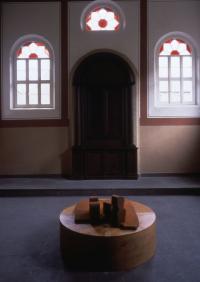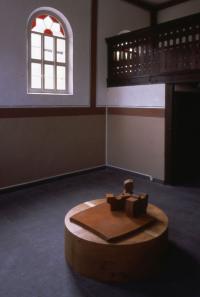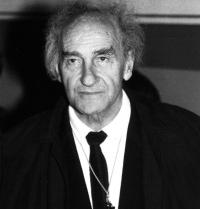As regards materials, sculptors not only use iron, wood or stone, but also space and empty space, as Chillida has amply illustrated in his oeuvre. For him, space is not a vague entity surrounding objects, but it is the space which creates things, which exists inside these things and is both effective and active. Space must be able to express itself in a form, it must possess a kind of spiritual dimension. For the artist, sculpture serves to transform space into something we can experience and be aware of. To this end, Chillida has developed a highly precise and complex abstract formal idiom. The three elements on the steel plate En el limite demonstrate in an exemplary manner, that three-dimensional volume is not possible without the void of space, because the vibrant qualities of a form extend beyond its edges. Accordingly, the shape only emerges as a result of its interplay with empty space. When this happens, empty space becomes a "visible resonance". Which spatial phenomena do the shapes allude to? Shapes can, for instance, be composed in the mind. Do they stem from a unity, or did they break apart? Alternately, are they not rather condensed units of spatial activity which lunge out far beyond the borders of the base and come into contact with the surrounding space of the synagogue?
The open nature of the sculpture relates it to the surrounding space. "A sculpture must always stand in relation to the location and surroundings in which it is located and which it fills with life," Chillida insists. Before beginning with his work, Chillida visited the synagogue in Stommeln. His perception and observation of the place formed the starting point for his concept.



